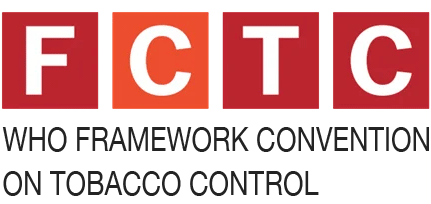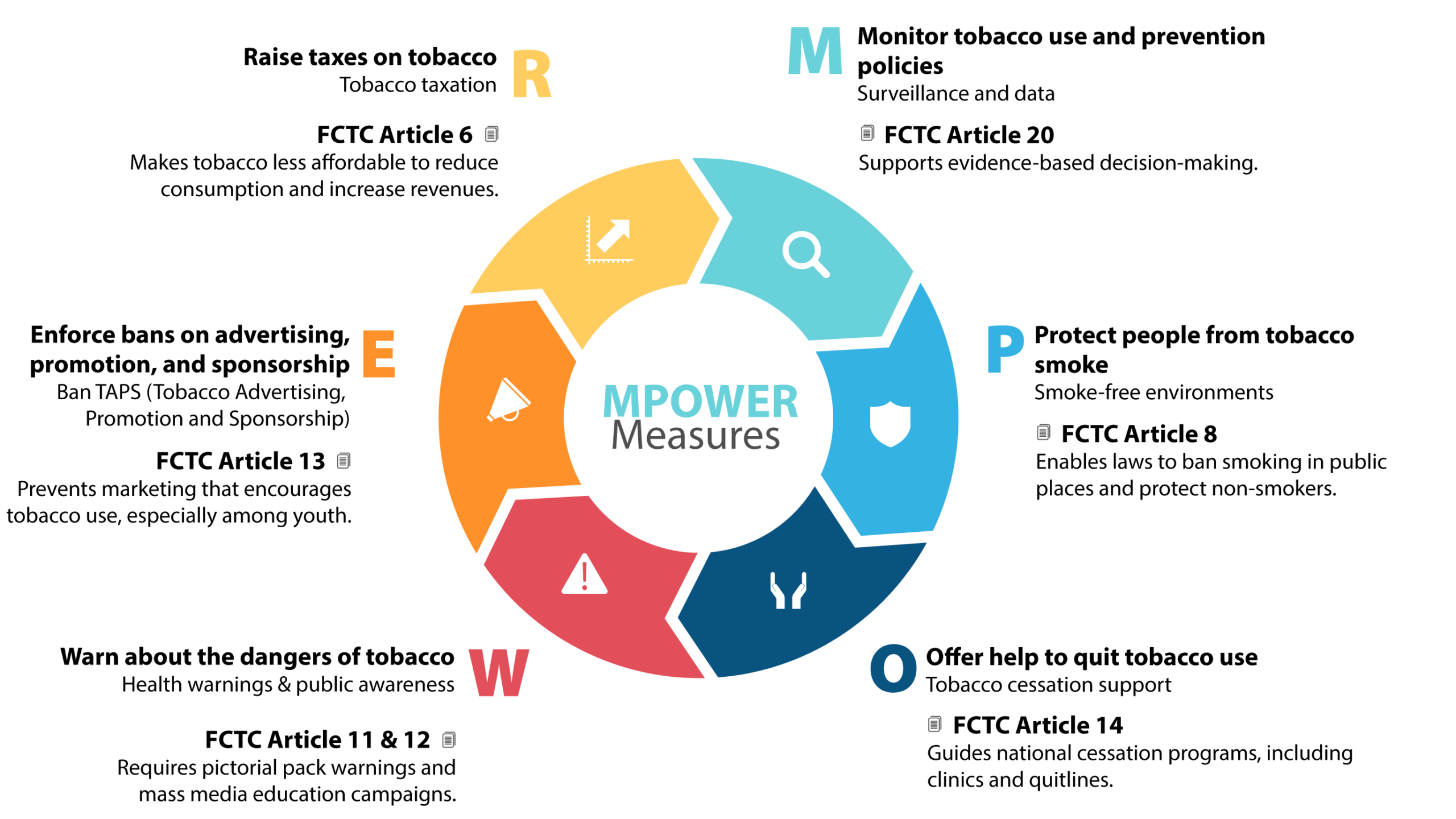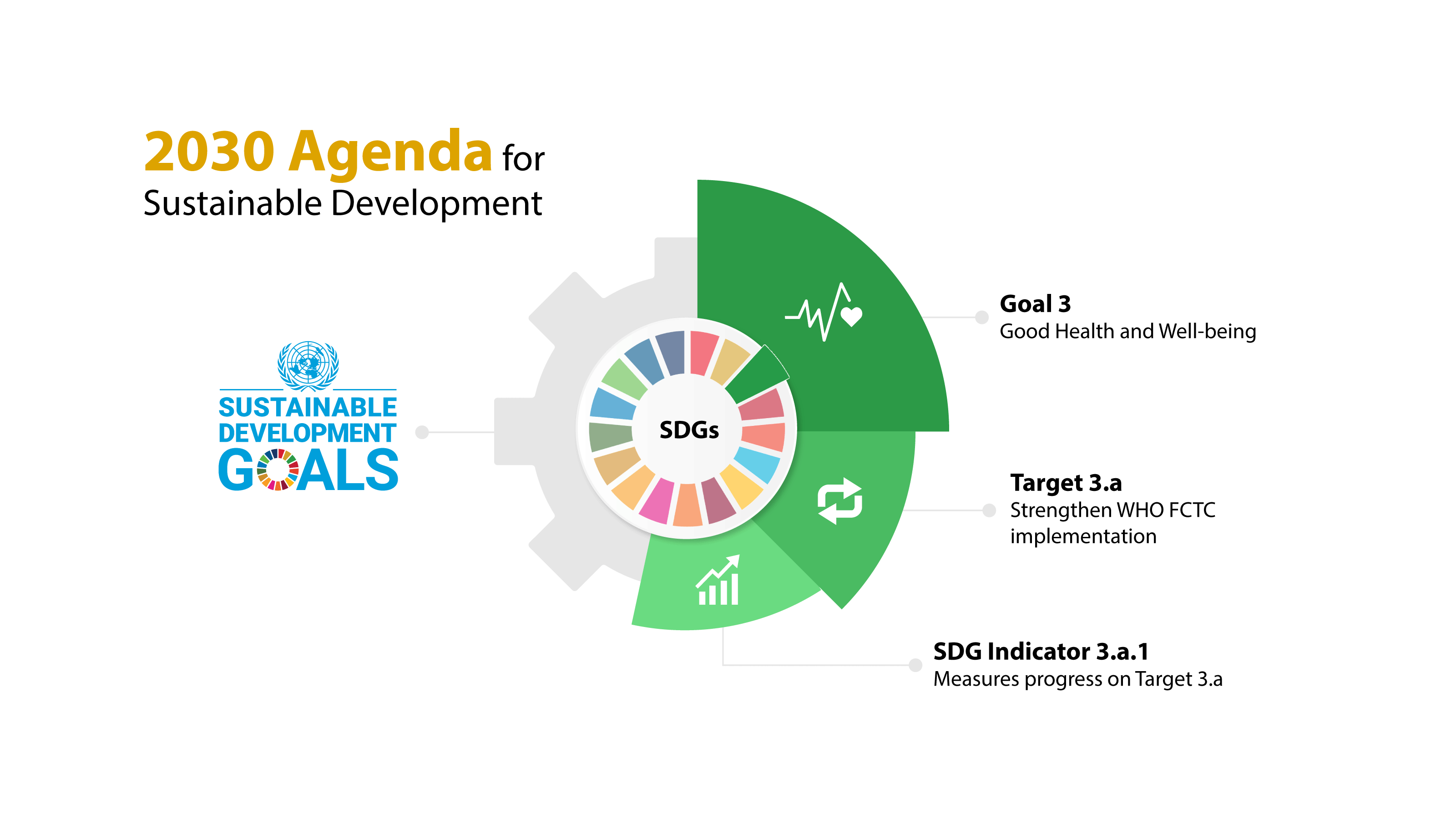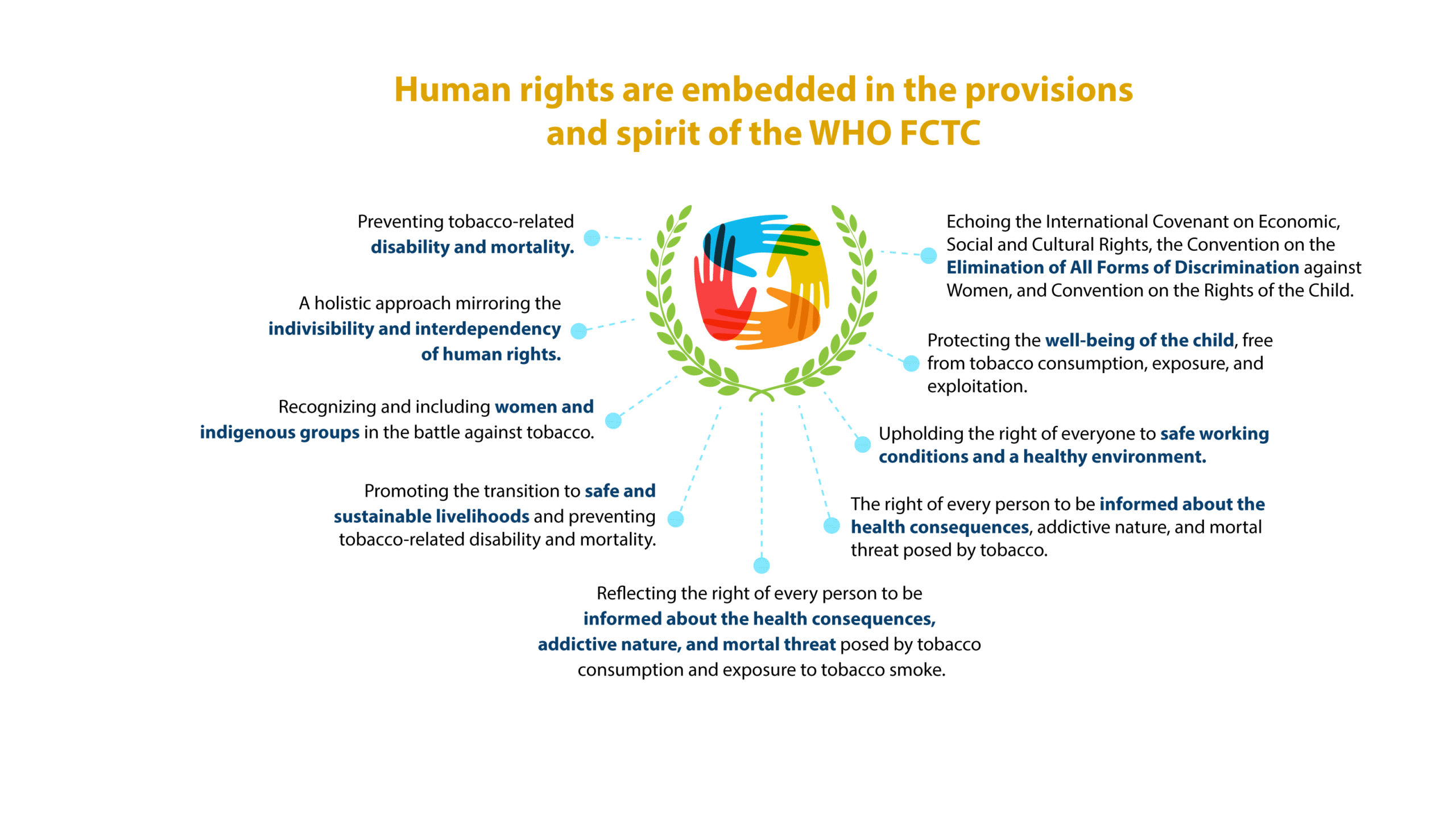
The foundation of tobacco control: the WHO FCTC
The WHO Framework Convention on Tobacco Control (WHO FCTC) is the world’s first global public health treaty, adopted by the WHO Assembly in 2003 and effective since 2005. Its main objective is to protect present and future generations from the health, social, environmental, and economic consequences of tobacco consumption and exposure to tobacco smoke. The treaty was established to address the growing rates of tobacco-related diseases and deaths globally, as tobacco use is one of the leading causes of preventable death worldwide.
The Democratic Republic of Congo (DRC) signed this international public health treaty in 2004 and ratified it in 2005. This treaty provides guidelines and directives on combating the tobacco epidemic based on the best recommendations of its parties and the WHO. It also gives the baseline for measuring strong provisions of tobacco control based on the WHO FCTC.
Many individuals new to tobacco control struggle to distinguish between strong provisions and those weakened or manipulated by the tobacco industry. A clear understanding of the WHO FCTC is essential for effective tobacco control practices.

Explaining and defining the WHO FCTC
The WHO FCTC is a global health treaty adopted in 2003 by the World Health Organization (WHO) to reduce tobacco use and its harms. It promotes measures like advertising bans, higher taxes, smoke-free spaces, and anti-smuggling efforts. It guides countries in protecting public health from tobacco industry influence.Ratified by over 180 countries, covering more than 90% of the world’s population, the WHO Framework Convention on Tobacco Control (FCTC) employs evidence-based strategies to control both the supply and demand sides of tobacco.
The WHO FCTC uses a comprehensive, evidence-based approach to reduce both tobacco demand and supply. Demand reduction strategies (Articles 6–14) include tax increases, smoke-free laws, health warnings, advertising bans, and cessation support. Supply reduction strategies (Articles 15–17) focus on eliminating illicit trade, restricting sales to minors, and promoting alternatives to tobacco farming.African countries that have ratified the WHO FCTC
Source: UN Treaty Collection as of Mar 20, 2025
Understanding the difference between the WHO and the WHO FCTC secretariat
The WHO is a specialized agency of the United Nations responsible for global health leadership, including setting norms, providing technical support, and coordinating international health responses. In contrast, the Secretariat of the WHO FCTC is a distinct entity established solely to support the implementation of the tobacco control treaty. The FCTC Secretariat operates independently from the WHO’s core programs and has its own governance structure. It reports directly to the Conference of the Parties (COP), the official decision-making body of the FCTC, rather than to the WHO leadership. This separation ensures that the treaty’s implementation remains focused, treaty-bound, and driven by the parties themselves.
The scope of the WHO FCTC worldwide

To understand the scope of the WHO FCTC, it is important to highlight two complementary approaches to represent the FCTC: the WHO FCTC Framework and MPOWER.
- The WHO FCTC offers a comprehensive legal framework to reduce tobacco demand (e.g., taxes, public education, advertising bans), control supply (e.g., illicit trade, youth sales), address broader impacts (e.g., environment, liability, cooperation), and protect governance from industry interference. It empowers countries to take coordinated action for better health and sustainable development.
- MPOWER, developed by WHO, is a technical package built around six key demand-reduction strategies: Monitor, Protect, Offer help, Warn, Enforce bans, and Raise taxes. It provides practical tools to support implementation of selected FCTC articles.
In contrast, the WHO FCTC Secretariat promotes a more comprehensive treaty-based approach, addressing not only demand but also supply-side measures, legal accountability, environmental protection, and international cooperation. While MPOWER is an action-oriented toolkit, the FCTC is the full legal and policy framework guiding long-term, systemic tobacco control. MPOWER was developed by the WHO in 2008 to help countries apply key articles of the FCTC effectively, especially for Ministries of Health.

FCTC = Legal and policy framework (what to do)
MPOWER = Implementation roadmap (how to do it)
WHO FCTC and SDG
Tobacco control is a critical development issue due to its multifaceted impact on health, economics, and social equity. The WHO FCTC supports SDG 3: Good Health and Well-Being by reducing tobacco-related deaths and diseases. It directly contributes to Target 3.a, which urges countries to strengthen FCTC implementation. Effective tobacco control is key to lowering noncommunicable diseases and promoting global health.The relationship between the 2030 Agenda, SDGs, and the WHO FCTC

Among these, Goal 3 aims to ensure healthy lives and promote well-being for all ages.
A key component of this goal is Target 3.a, which calls for strengthening the implementation of the WHO Framework Convention on Tobacco Control (WHO FCTC) to reduce tobacco use and its health consequences.To monitor progress, SDG Indicator 3.a.1 measures the implementation level of the WHO FCTC in different countries. The WHO and the Secretariat of the WHO FCTC jointly oversee this indicator as part of the broader Global Strategy to Accelerate Tobacco Control (2019–2025). This strategy aligns tobacco control efforts with the SDGs, recognizing the interconnections between Target 3.a and other health, economic, and environmental goals.WHO FCTC and human rights
The WHO FCTC is rooted in human rights principles.
Tobacco control is directly linked to the right to health as recognized in international human rights treaties such as:- Universal Declaration of Human Rights (Article 25)
- The International Covenant on Economic, Social and Cultural Rights (Article 12)
These affirm the right of everyone to the highest attainable standard of health:
- Protection of public health: Governments have a duty to protect people from harmful substances, including tobacco. Implementing tobacco control measures is part of fulfilling their human rights obligations.
- Prevent exploitation: Tobacco industry practices, which often target vulnerable populations (such as youth and low-income groups), violate individuals’ rights to life and health.
- Empower people: The FCTC promotes education, access to information, and the right to a smoke-free environment, thus empowering people to make informed decisions about their health.

This module gives a quick overview of the components of the WHO FCTC. Although the WHO FCTC is a powerful tool for global tobacco control, many stakeholders, such as policymakers, health professionals, and civil society are still not familiar with how its articles work or how to apply them in real-world settings. This knowledge gap weakens implementation and reduces the treaty’s potential to protect public health and support sustainable development. This module aims to bridge that gap by focusing on the most actionable elements of the FCTC.
An overview of the WHO FCTC
FCTC articles overview and their guidelines
This section briefly overviews the key articles of the WHO FCTC and their corresponding implementation guidelines. The articles define the legal commitments that parties must uphold. At the same time, the guidelines serve as official documents adopted by the COP to support the application of specific articles. These guidelines offer practical recommendations, best practices, and policy options to help countries implement the Convention effectively. Guidelines are not always available for every article; they are usually created for the most significant articles, especially those that directly influence public health policies.
Articles 1 to 5
Objectives, guiding principles, and general obligations (Articles 1 to 5)
| Article | Existing Guidelines | Key Insights about Best Practices (WHO FCTC) |
|---|---|---|
| 1. Use of terms | No | Definitions of Key Terms |
| 2. Relationship between this Convention and other agreements and legal instruments | No | Encourages stronger measures beyond FCTC. |
| 3. Objective | No | Objective to protect health. |
| 4. Guiding principles | No | Principles emphasize health rights. |
| 5. General obligations | Yes | Comprehensive tobacco control strategies; protection from industry interference. |
Articles 6 to 14
Measures to reduce the demand for tobacco (Articles 6 to 14)
| Article | Existing Guidelines | Key Insights about Best Practices (WHO FCTC) |
|---|---|---|
| 6. Price and tax measures to reduce the demand for tobacco | Yes | Raising taxes to reduce consumption. |
| 7. Non-price measures to reduce the demand for tobacco | No | Comprehensive non-price measures like advertising bans. |
| 8. Protection from exposure to tobacco smoke | Yes | 100% smoke-free environments. |
| 9. Regulation of the contents of tobacco products | Yes | Testing and measuring contents and emissions. |
| 10. Regulation of tobacco product disclosures | Yes | Disclosure of product information. |
| 11. Packaging and labeling of tobacco products | Yes | Health warnings and plain packaging. |
| 12. Education, communication, training, and public awareness | Yes | Public education on tobacco risks. |
| 13. Tobacco advertising, promotion, and sponsorship | Yes | Comprehensive advertising bans. |
| 14. Demand reduction measures concerning tobacco dependence and cessation | Yes | Cessation support and treatment availability. |
Articles 15 to 17
Measures to reduce tobacco supply (Articles 15 to 17)
| Article | Existing Guidelines | Key Insights about Best Practices (WHO FCTC) |
|---|---|---|
| 15. Illicit trade in tobacco products | Protocol | Combating illicit trade in tobacco. |
| 16. Sales to and by minors | No | Prohibits sales to minors. |
| 17. Provision of support for economically viable alternative activities | No | Support for alternative livelihoods. |
Articles 18 to 20
Other measures (Articles 18 to 20)
| Article | Existing Guidelines | Key Insights about Best Practices (WHO FCTC) |
|---|---|---|
| 18. Protection of the environment and the health of persons | No | Environmental and health protection in tobacco cultivation. |
| 19. Liability | No | Legal and civil action against harm caused by tobacco. |
| 20. Research, surveillance, and exchange of information | No | Promotes research and data collection. |
FCTC: Roles and relationships among ministries
The successful implementation of the WHO Framework Convention on Tobacco Control relies on coordinated efforts across various government ministries. Effective tobacco control involves collaboration among these sectors to create a unified strategy for reducing tobacco use and its associated harms.
Each article of the WHO is linked with relevant departments/ministries as shown below.
WHO FCTC Articles and relevant department/ministry
The WHO FCTC does not only concern the Ministry of Health (MoH). Within the government, it concerns many other ministries, such as the Ministry of Justice and the Ministry of Labor, although the MoH must be the focal point.
The following table shows the list of ministries relevant to the specific articles of the WHO FCTC:
Ref
Ref Ref Ref Ref Ref Ref Ref
